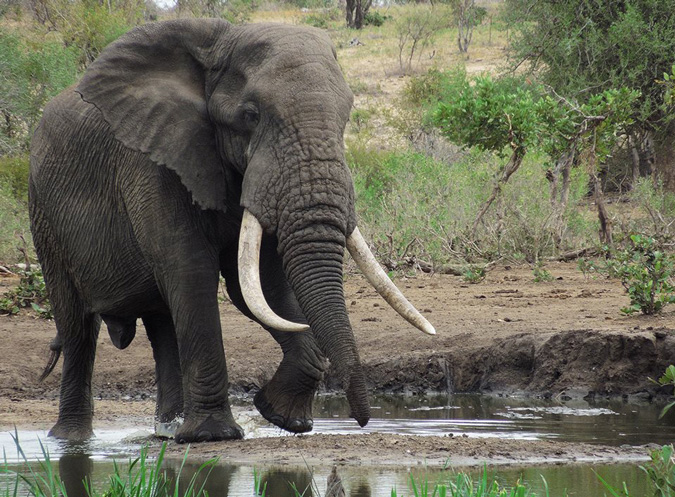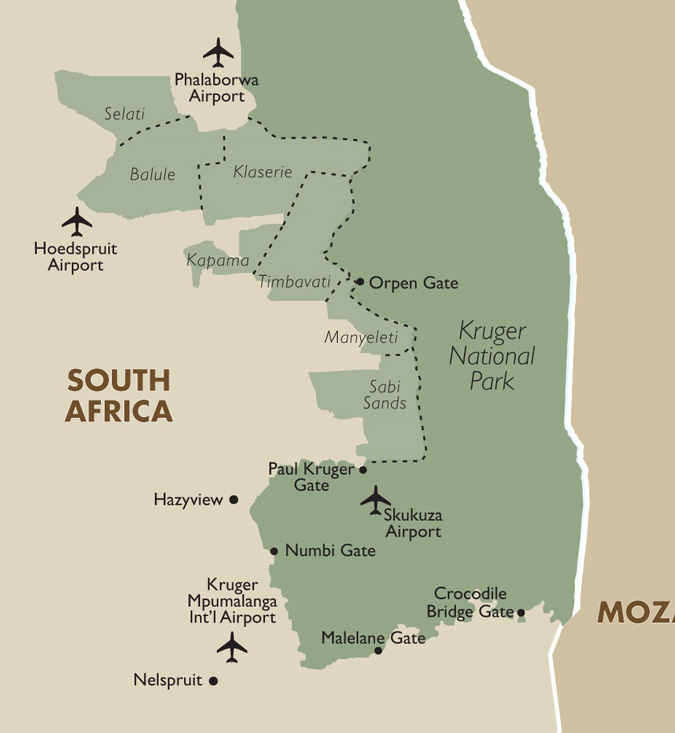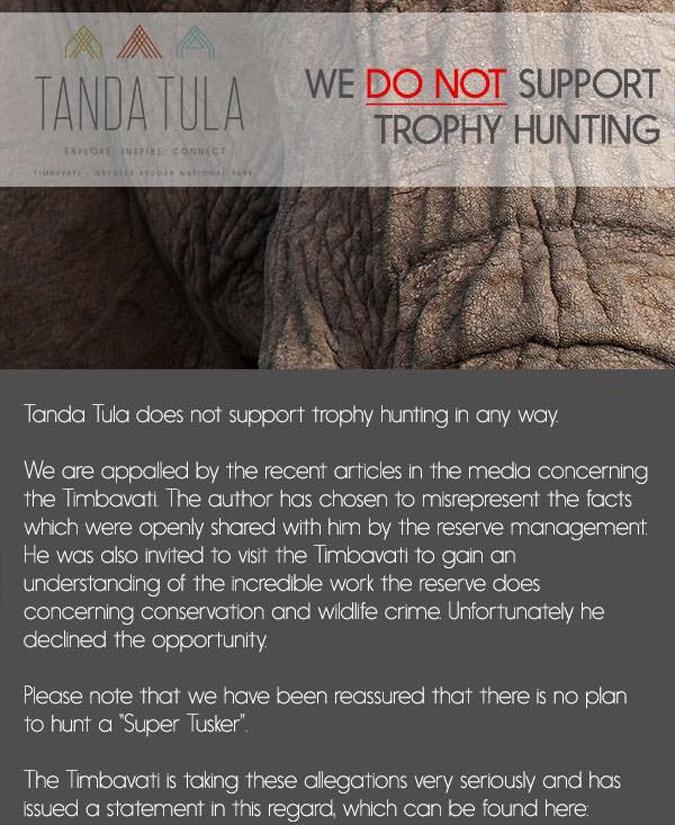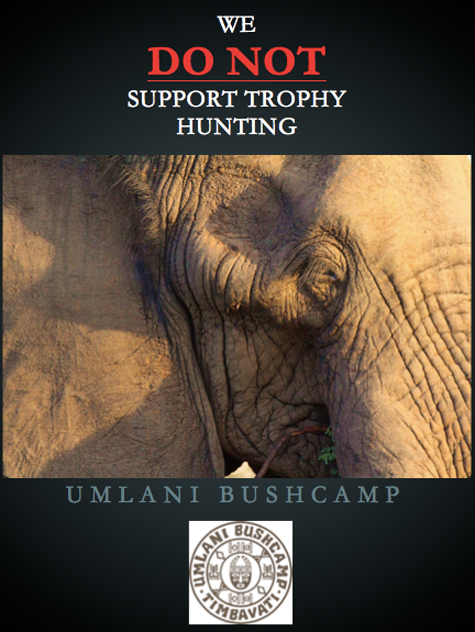Contrary to the social media hysteria over the past few weeks, there will be no ‘Super Tusker’ ‘100 Pounder’ elephant hunted at Timbavati in the Greater Kruger. There was never going to be such a hunt.
That juicy but ultimately misleading story resulted in some pretty vicious social media attacks on lodges within Timbavati and calls to boycott Timbavati lodges – the very lodges that represent the only viable alternative funding solution to trophy hunting, and have almost no say in the reserve’s management decisions.

The irony is that the real debate should be about the trophy hunts that do in fact happen at Timbavati (and other nearby reserves). I would like to believe that every reasonable person out there wishes that trophy hunting as a means of game reserve funding has to stop.
However, this debate requires accurate facts and proper context, in the interest of informed and responsible discourse. This issue – the use of trophy hunting for conservation benefit – is complex and emotional for most of us (me included) and it surely deserves better than what we have witnessed in the past few weeks. I ask that you please read to the very end of this long post.
THE BIG ISSUE
Four private nature reserves – Balule, Klaserie, Timbavati and Umbabat – collectively referred to as the Associated Private Nature Reserves (APNR), share an unfenced border with South Africa’s Kruger National Park and every year apply to the relevant authorities for their offtake permits (trophy hunting and culling). Revenue from trophy hunting pays for the management of the reserves and culling is done to reduce the impact of certain species (mainly impalas) on the vegetation, especially during periods of drought. Included in the most recent offtake application was the trophy hunting of elephants, lions, buffalos and rhinos. Leopards were also on the list, but that was a formality because there is a zero leopard hunting quota countrywide and therefore no such permit will be issued.
A journalist writing for an activist platform obtained a copy of the requested offtake figures for the four combined reserves from informal sources. He added the terms ‘100-Pounder’ and ‘Super Tusker’ to the equation, suggested impropriety surrounding the leopard issue, focused his anger on Timbavati (more specifically on Timbavati tourism lodges) and went public with a somewhat dramatic headline. The story was accepted at face value and republished by various publications and activists. One publication even added ‘canned’ hunting to their headline, to spice things up.

The two contextual matters that should frame this debate:
1. Zero poaching
Timbavati has suffered zero poaching incidents in the past 18 months, a period when neighbouring private reserves and the Kruger itself have experienced an unprecedented loss of rhinos and elephants to international wildlife crime syndicates. This rare success does not, in my opinion, justify keeping trophy hunting into the future, but it does demonstrate the calibre of management happening at Timbavati.
2. The ‘100-Pounder’, ‘Super Tusker’ elephant
Much of the uproar in social media circles was caused because the activist platform elevated the status of one particular elephant in the offtake application from ‘trophy bull’ to ‘100-Pounder’ and ‘Super Tusker’. And yet there never was going to be a ‘100 Pounder’ or ‘Super Tusker’ hunt.
Perhaps this was simply opportunistic marketing because the topic of ‘Super Tuskers’ was trending on social media and emotions (including mine) were running high after this tragic story the previous week about the loss of yet another of Tsavo’s Super Tuskers – giant elephants with tusks in excess of 100 pounds each – highly sought-after by trophy hunters.
The use of these specific terms by the activist platform demands a closer look.
Hunting any elephant is, in my opinion, just wrong – but for now, let’s focus on the facts of this particular situation. Regarding the offtake application in question, the ‘trophy bull’ requested specifically excluded Tuskers / Super Tuskers. Not only does the Timbavati protocol exclude all ‘iconic’, named, and collared elephants, management has also stated categorically that no 100-Pounder will be hunted even if one is found that is not named, collared, or iconic – as the agreed protocol and agreements with the relevant authorities specifically excludes all 100-Pounders. This information was provided to the journalist who wrote the story.
According to Timbavati management, the ‘trophy elephant’ in question will firstly be older than 50 years (they believe that these old bulls have lost too much condition to compete with younger breeding bulls and are therefore no longer contributing to the population. I disagree, but let’s move on for now), and secondly ‘tusk weight unlimited’ – a very vague and clumsy wording, but apparently meaning that they stopped defining elephant trophies by tusk size after advice by researchers that this practice was detrimental to the large tusked elephant gene pool.
During my research into this issue, I obtained the hunting records from Timbavati for the past 10 years. I discovered that no 100 Pounders were hunted during that period, and in a subsequent email discussion determined that no 100 Pounder has been hunted in the area for at least 19 years (current management memory). The heaviest tusk record I could trace over 10 years was 60 pounds in 2013. In other words, no Tuskers or Super Tuskers.
If ‘100-Pounder’ ‘Super Tuskers’ were never in the picture to begin with, why was this the headliner and main message being driven home by the journalist and activist platform? Was this a giant red herring?
Let’s now focus on Timbavati and why they use trophy hunting to fund their costs, so that we can come up with viable alternatives.

Background and history to Timbavati
The 53,395 hectare Timbavati in the Greater Kruger National Park, South Africa, has used trophy hunting to finance the running of the reserve (including anti-poaching operations) since it was proclaimed in 1956. At the time, the land was farmed and had become degraded with very few wild animals around – despite sharing a border with the Kruger. The owners agreed to forgo farming income and place the land into permanent protected status, with restrictive title deed endorsement binding all future owners, and the ongoing costs to be funded by operations.
In the subsequent 37 years, wildlife numbers grew in this fenced reserve. In 1993, fences between Timbavati and Kruger were dropped to permit natural local migration of wildlife. Timbavati thus became part of one of Africa’s best conservation success stories, increasing the size of the Greater Kruger by 10% to 2.2 million hectares.
At Timbavati, trophy hunting is highly regulated, based on annual census and scientific assessment by external scientists, in the context of environmental factors. This leads to offtake applications and ultimately regulatory approval.
Wildlife populations in Timbavati
Over the past 20 years, annual population counts in Timbavati show stability in wildlife populations, subject to cycles associated with drought and abundance. The fact that animals can migrate freely into the massive neighbouring Kruger also adds an element of fluctuation to populations. I have studied the stats provided, conducted my own layman analysis, and asked questions with a critical eye.
Significantly, in the past 20 years, elephant populations in Timbavati have increased by 400% and rhinos by 500%. A rough, back-of-a-matchbox calculation of current densities of those two species reveals that, when compared to Kruger, Timbavati hosts many times the number of elephants and rhinos per 1,000 hectares (I am unable to reveal the precise figure, for security reasons). There are probably reasons associated with specific veld types and permanent water availability, or possibly even local migrations, at the time of year when the count occurs.
Costs to manage Timbavati
Timbavati currently requires about R20 million per year to manage the reserve. Almost 40% of that is spent on anti-poaching security (up from 15% two years ago). The security cost is expected to rise significantly in coming years as increasingly determined and well-resourced crime syndicates focus on the last remaining honey pots.
Timbavati is a privately-owned game reserve and therefore cannot rely on donors or taxpayers to fund its costs. The above annual cost is currently funded as follows:
♦ 61% by trophy hunting revenue
♦ 17% by tourism visitors (currently at R215 per visit)
♦ 22% by landowner levies
Poaching in Timbavati
As mentioned earlier, Timbavati has experienced zero poaching incidents in the past 18 months. For illustrative purposes only, let’s assume that Timbavati did not have such a strong management team, or that the necessary funding to control poaching was not available, and therefore suffered the same ratio of rhino poaching as its Kruger neighbour. Bearing in mind the relative areas under conservation and Kruger’s loss of 662 rhinos in 2016, Timbavati could conceivably have suffered the loss of 18 rhinos to poaching. If I factor in the relative density of rhinos in Timbavati, this figure balloons to a figure I can’t reveal due to security concerns. This potential loss of even 18 rhinos to poaching is in stark contrast to the one rhino that actually was trophy hunted in Timbavati in 2016.
Again, this is a back-of-a-matchbox calculation and not the stuff of headlines or bold claims, but it does provide the necessary context to the debate.

Trophy hunting versus tourism: the hard facts
The numbers:
♦ Timbavati attracts approximately 24,000 photographic tourist visits to the reserve per annum, compared to 46 trophy hunters who will hunt 81 animals during the coming year (not the thousands claimed by the activists);
♦ The average trophy hunter in Timbavati brings in about 1,800 times the revenue to the reserve coffers compared to the average photographic tourist;
♦ Currently, the revenue from trophy hunting to fund reserve management and security amounts to 3.6 times that of the tourism contribution. More on how this model has to change further on.
A full comparison of trophy hunting to tourism is extremely complex, and here are just two qualitative factors to consider:
♦ Tourism generates more jobs and skills advancement than hunting, and is, therefore, more sustainable as an economic model acceptable to the all-important local communities, and to human social evolution;
♦ Hunting has a lower physical environmental footprint – buildings, roads, vehicles, power, water, sanitation, etc.
On the matter of culling
Culling is an integral aspect to game reserve management, even for an area the size of the Kruger National Park. The vast majority of the offtake figures applied for by the four game reserves in question relates specifically to the culling of impalas.
Many well-known game reserves in South Africa that market themselves as being free of trophy hunting take part in culling and/or live capture exercises. This is an inconvenient truth that is seldom discussed openly. Perhaps it’s time for the naked truth?
Comparing Timbavati and Sabi Sand revenue models
The Sabi Sand Game Reserve is a renowned safari mecca not far south of Timbavati and is host to some of this country’s top safari brands, including Londolozi, Singita and Mala Mala. They too used to derive revenue from trophy hunting, until the density and price tag of lodges was sufficient to switch entirely to funding from tourism. To this day, Sabi Sand Wildtuin management meetings host active debate about the use of trophy hunting to meet costs, but thankfully the ‘no’ vote seems to prevail.
Timbavati seems to be on that same journey, and it is my fervent hope that they achieve the same end-goal.
Revenue comparison between Timbavati and the Sabi Sands, two similarly-sized game reserves:
♦ Sabi Sand: 716 beds at a price tag of R4,000 – R23,000 per person per night
♦ Timbavati: 259 beds at a price tag of R2,000 – R11,000 per person per night
In a nutshell, Sabi Sand generates several times the tourism revenue of Timbavati because it has more beds and attracts a higher price tag, and is, therefore, able to generate sufficient management funding without the need for trophy hunting.

The solution
In simple terms, the only solution is to build up tourism revenue for Timbavati to the extent that trophy hunting is no longer required, as has been achieved by Sabi Sand. Juxtapose that end goal with the current activist campaign to boycott Timbavati lodges, and the likely consequence of trophy hunting further entrenching itself.
Based on current costs and extensive data made available by some of the Timbavati lodges and by Timbavati reserve management (two separate bodies), the following:
♦ Timbavati lodges would need to raise tourism levies by a factor of almost five times the current revenue. This could be done by a combination of more lodges/beds, and by increasing the conservation levy per visit.
♦ Too many lodges/beds would surely ruin what is a sought-after, low-density safari experience. Timbavati currently enjoys 24,000 visits per annum – a revised 110,000 visits seems very high for this particular area. Lodges cannot for logistical reasons operate at extremely high occupancies, and most Timbavati lodges already operate at almost 60% average occupancy for the year. Therefore, this solution in effect boils down to the building of four to five times as many lodges/beds as to what currently exists.
♦ Increasing the conservation levy from the current R215 to R985 per visit – more than double that being charged by the more populous Sabi Sand if one assumes a 3-day visit.
Right now, the Timbavati lodge owners are engaged in this debate and actively negotiating with Timbavati reserve management for a new model that could conceivably result in a reduced dependency on trophy hunting to fund the reserve. Note though that most lodges have very little say in these matters, as not only are many of them simply tenants, but they are also not mandated to make reserve management decisions.
This solution will I would imagine require years to implement – and in the meantime, Timbavati reserve management requires funding to continue their work.
Timbavati management
I first met Timbavati chief warden Bryan Havemann in mid-2016 when I cycled through Timbavati as part of a fundraising exercise to combat poaching. During a brief discussion, he asked if I was prepared to meet with him to discuss how best to communicate the realities of sustainable utilisation to members of the public. In February this year, he again contacted me and we arranged that I would visit his bushveld office during the time when I had planned to visit several lodges in the reserve. Two days before my visit this social media storm broke cover, and so what was going to be a casual discussion turned into an inquisition from my side as to what was really going on.
Let me be frank. I am impressed with the man, with the research-based adaptive strategy that has been implemented and what has been achieved. I have serious misgivings about their trophy hunting dependency and have communicated that in no uncertain terms to Havemann, and to a broader body of his colleagues.
But I also accept that my perspective is that of a largely desk-bound urban person. To cut to the core, Timbavati’s track record speaks for itself. I have no doubt that the management team will continue to apply themselves totally to whatever needs to be done to keep Timbavati safe from the wildlife trafficking criminals that are operating with seeming impunity elsewhere. Reality suggests that it’s unlikely that the zero-poaching scorecard will prevail indefinitely, but hopefully, the Timbavati team will react to incidents with the precision and dedication displayed so far.
Final thoughts
Trophy hunting is a colonial-era industry that celebrates killing animals for fun and ego. Surely this industry no longer has a place in Africa if there are suitable alternatives for conservation funding?
Timbavati does have an alternative, and it’s now time to evolve their funding model by increasing the conservation levies paid by tourists and eventually doing away with trophy hunting. I hope that tourists will accept this increase in price and feel proud at being part of the solution.
The journey is not a linear one – game reserve management teams all over Africa face daily realities that cannot be whisked away by a fit of keyboard warrior rage, or advice such as ‘put all the animals somewhere safe’. And activist thuggery is not the way forward either, where fake reporting, instant utopian solutions, and emotional bulldozing dominates discussion, and reasonable experienced voices are drowned out.
I, for one, choose fact over fiction, and practical workable solutions over keyboard hype. I hope fervently that enough of you agree with me to help evolve Timbavati and others from dependence on trophy hunting to tourism for that much-needed management and anti-poaching revenue. After all, Sabi Sand was afforded that freedom.
And above all, I ask that each of you go on safari somewhere in Africa, as soon as possible. And then go again.
Respect. Keep the passion. A luta continua!
To comment on this story: Login (or sign up) to our app here - it's a troll-free safe place 🙂.![]()








